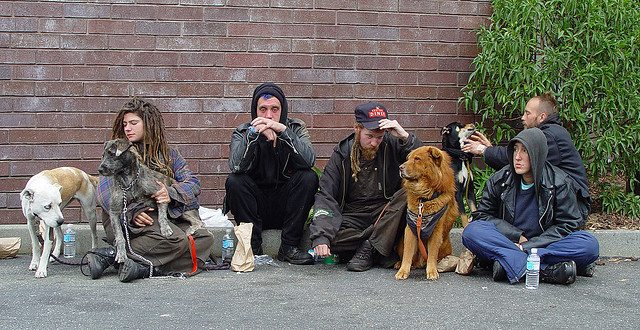Near the last week of my internship, I attended the 2012 National Alliance to End Homelessness. I often pride myself as being a part of a newspaper that represents the homeless, but as I sat in a crowd of several hundred, I could definitely say I was lost. I was lost by the use of acronyms, from HRP, ESG, HEARTH to SAMSHA. The audience as well as the speakers used the acronyms like it was nobody’s business, throwing them out there as though everyone was familiar with the terms. In one instance, the speaker asked the audience if he needed to explain an acronym. Everyone, or at least everyone I heard, said no. I had replied with a yes, but quickly went silent when I realized I might be the only one. The lady beside me, possibly out of compassion, whispered the meaning of the word to me.
That was when I realized that as a newspaper for the homeless we need to be familiar with the other intricacies of homelessness. It was a two-way street; even in the world of homelessness, there is the bureaucratic side and the human side. We need to be experts on both. We need to be familiar both with what the homeless person faces everyday and the processes these organizations that support the homeless face.
For that reason, as I leave, I do not want to take the knowledge I learned from the conference. So I created a survival handbook for future interns. In the handbook, it contains terms that every intern ought to know when covering a particular topic, from the difference between chronic homelessness and episodic homelessness and how it affects funding, to acronyms that people in a specific field throw out because they have come to need those organizations or funding like a person needs food, terms like HUD, SAMSHA and HUD-VASH vouchers, among many others.
But even more importantly, we have to remember the humans this is all about. Sometimes, in a race to learn the bureaucratic side of things, we forget the human side of things, the reason we got into it in the first place. My first experience out in the field was when I needed to take a photo for a fellow intern’s story. We had a specific topic we were trying to cover, but many of the people we interviewed had other problems they wanted to speak about. The question then is, are we representing them enough? It is easy to get comfortable in an office, writing about homeless issues without ever venturing out into the streets where the homeless actually stay.
And just as important as learning the ABCs of Homelessness, we have to learn more about the voices who actually face homelessness everyday. In addition to a survival handbook, I suggest we create a Homeless Voices column. My idea of this column is more like a stickies-looking design with words from each person, spread around on the page. Each issue could focus on one topic per issue: long lines for food stamps, adequacy of cooling centers during the heat, the neatness (or lack of) in shelters. That way, they can voice out their thoughts on whether they are satisfied with the services and if something needs to change.
I guess that from every sour thing comes something sweet. From the issue of being lost as a result of the acronyms, it made me more reflective. In the end, it brought about some change that I hope would impact Street Sense’s reporting in the future.








